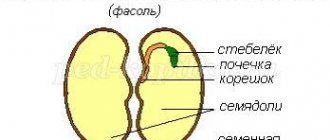so UNT / Geography / Lesson plans for geography 8th grade
Lesson 17. RIVERS OF RUSSIA
19.08.2014 8933 0
Objectives: to expand students’ understanding of the different types of land waters and their distribution on the territory of Russia, the importance of rivers in nature and human life; systematize students’ knowledge about the country’s largest river systems, their basins, nutrition and regime; form the concepts of “river fall”, “river slope”, “flood”, “low water”, “flood”, “annual flow”; teach to identify the features of the main river systems of the country using maps and statistical materials; develop the ability to predict changes in rivers under the influence of human activity.
During the classes
The optimal choice of lesson structure is based on taking into account the characteristics of the content, the level of preparation of students in a given class, the availability of teaching aids, etc. This makes it possible to distribute study time most effectively.
I. Introductory conversation and preparation for the perception of new knowledge.
An important element of this lesson is the motivation of learning activities. Therefore, it is advisable for the teacher to devote time to updating knowledge about water bodies and resources of Russia. You can use student messages with interesting information and visual aids. Messages should be short and sweet. It is desirable to reflect the attitude of indigenous peoples and our ancestors to rivers, lakes, and springs; pay attention to the fact that water bodies occupy a large place in music, painting, poetry, and folklore.
“The role of rivers in the historical fate of peoples is great. Among the Slavs, rivers served as a source of water, food (fishing), and a barrier from nomads. No one had the right to refuse water to a person - this unwritten law was reflected in the saying “How to give a drink.” Beliefs, omens, fortune-telling, conspiracies, as well as fairy tales, epics, and epics are associated with water.
The Russian people knew and loved their rivers well, calling them respectfully and affectionately: Mother Volga, Don Ivanovich. Let us remember how Prince Igor, who escaped from captivity, thanked the Don. And the author-chronicler himself knew the rivers well and accurately described them. The craft of a pilot was very honorable in Rus'. Since the 9th century, they began to use the energy of flowing water: water mills were built. With the help of water wheels, machine tools and other mechanisms were set in motion. The first hydroelectric power station in Russia was built in 1896.
Currently, river water is used very intensively in all spheres of life and economic activity.”
(Ermoshkina A.S. Geography lessons: 8th grade - pp. 70-71.)
Students can give examples of the diverse uses of water and its impact on society.
Then, based on the diagram “The relationship of inland waters with other components of nature” (Fig. 34 on p. 74 of the textbook), students draw a conclusion about what inland waters exist in our country. Determine from the physical map what symbols show internal waters on it; Based on the analysis of the maps, their location throughout the country is characterized. Using this diagram, students must prove that water is rightly called “the circulatory system of nature.”
“No one knows how many rivers there are on Earth. It all depends on what is considered a river. Thus, on the territory of Russia there are more than 130 thousand rivers with a length of 10 km or more, but if we also count rivers less than 10 km long, then there will already be more than 2 million, and the total length of the rivers is approaching 7-8 million km.”
(Water and air. - P. 22.)
II. Gaining new knowledge.
1. The study of the largest river systems of Russia and their characteristics is carried out through the characteristics of ocean basins. Explanation of new material alternates with work on the map. The results are entered into a table and subsequently make it possible to compare river basins by area, the main river systems of Russia - by length, area of the river basin, types of river valleys, etc.
Teacher. Arctic Ocean basin. The tilt of the earth's surface towards the Arctic Ocean determines the absolute predominance of the area of this basin over others. In the western part of the basin, lowland rivers with wide valleys, extensive floodplains and low flow rates are widely represented, with the exception of the rivers of the Baltic crystalline shield. In the eastern part of the basin, hard crystalline rocks are common, so the rivers, excluding the lower reaches, are predominantly mountainous. They are characterized by poorly developed, narrow, deep valleys, rocky riverbeds with numerous rapids and riffles, and high current speeds. Among the rivers of the Arctic Ocean, the Ob ranks first in terms of river basin area, the Lena in length, and the Yenisei in terms of annual flow.
Pacific Ocean basin. Almost all rivers in the basin are of the mountain type; they lay their channels in hard rocks, often in frozen soils. They are characterized by poorly developed valleys and high current speeds. Among the rivers of the Pacific Ocean basin, the longest and most significant in terms of annual flow volume is the Amur. A distinctive feature of most of the rivers in the basin, except for the Amur and Anadyr, is their short length, not exceeding 100-200 km in most cases.
Atlantic Ocean basin. The rivers of the Atlantic Ocean are represented by the Baltic Sea basin, into which the Neva, Western Dvina and others flow, and mainly by the Black and Azov Sea basin, into which the Don, Dnieper and other rivers flow. The area of the Atlantic Ocean basin is the smallest. Within the basin, rivers of the plain type predominate. The exception is the rivers of the Caucasus. The river beds are composed predominantly of sedimentary rocks and have a calm flow, which is due to the long history of the development of the Russian Platform, which led to the formation of a typical plain.
Internal drainage basin. It includes the rivers Volga, Ural, flowing through the territory of Russia and Kazakhstan, and other rivers. The basin ranks second in area after the Arctic Ocean basin. This basin is dominated by lowland rivers. Mountain rivers are characteristic of the Caucasus. Plain rivers are ancient, their beds are composed of soft sedimentary rocks. The river valleys are well developed. The specific features of these rivers are the formation of dry deltas and minimal
low annual flow rates, which is caused by the excessive dryness of the climate of this region. The largest river in the internal drainage basin is the Volga. It ranks first in Russia in terms of river basin area.
As students fill out the table, they can be asked to answer a number of questions and complete tasks:
1) Which ocean basins do the rivers of Russia belong to?
2) Determine from the map the river basins of the Arctic, Atlantic, and Pacific oceans, the area of the drainage region and compare them by area.
3) Explain why the Arctic Ocean river basin is the largest in area.
4) Why did the basin of the Pacific Ocean river systems stretch out as a narrow strip along the coast?
5) Explain why rivers differ in their flow patterns?
6) Establish a relationship between the rocks that make up river beds and the type of river valleys.
7) Give examples of the use of mountain and lowland rivers in farming.
2. Deepening students’ knowledge about the features of the largest river systems is facilitated by the formation of concepts that reflect some parameters of the characteristics of rivers. A step-by-step presentation of the material is accompanied by writing in a notebook.
Teacher. To assess a particular river in human life and activity, it is very important to know its following characteristics: fall and slope, regime, amount of flow.
The fall of a river is the difference in elevations of the water surface at two points located at some distance along the course of the river. Thus, the fall of the Volga River in the area from its sources (height above sea level 226 m) to Nizhny Novgorod, where the water line in the river above sea level is 63 m, is equal to 226 - 63 = 163 m. The difference in heights at the source and mouth is called a complete fall rivers. Thus, to determine the total fall of the river, the following must be done: determine the height of the source, the height of the mouth and find the difference between these values.
The height of the source - the height of the mouth = the full fall of the river.
For lowland rivers the drop is several cm/km, for mountain rivers – several m/km (Terek 5 m/km).
The slope of a river is the ratio of the river's fall to its length. To determine the slope of a river, divide the amount of fall of the river by its length.
River slope = river fall/river length.
For example, the average slope of the Volga River is 0.07%o, and in some sections of mountain rivers the slope reaches almost 5%o (Terek). The flow speed depends on the slope of the river: lowland rivers have low flow speeds, usually 0.3-0.5 m/s, and mountain rivers up to 3-6 m/s.
In order to consolidate the skills of determining the fall and slope of rivers, students complete the following practical tasks.
• Determine the fall of the Lena River on the map.
• Determine the fall of the Terek River.
• Set the slope of these rivers.
• Analyze the data obtained and draw a conclusion about the nature of the flow of the Lena and Terek, compare and explain the differences.
• Why does the Volga have a vast delta, and the Ob and Yenisei end in a long sea bay?
• The fall of the river is 215 m. Is this river mountainous or flat?
• How do the slopes of the river bed change in the lower, middle and upper reaches and how does the use of the river in the economy change in connection with this?
Fall and slope are the result of the influence of topography on rivers, but the influence of climate is manifested through the sources of river nutrition.
Types of river feeding:
a) snowy;
b) rain;
c) ground (underground);
d) glacial;
d) mixed.
Here it is also advisable to complete the task on the map. The task involves partial search activity of schoolchildren, since they must independently establish the influence of various climatic conditions on the nutrition of rivers.
• Determine which rivers of our country are fed by rain, snow, mixed, underground and glacial. Explain your choice.
Summarizing the students' answers, the teacher emphasizes that most of the rivers in Russia have mixed nutrition, although snow clearly predominates (Volga, Pechora, Ob, Yenisei, etc.). In permafrost areas, rivers do not have groundwater supply. In areas with strong evaporation, ground recharge is significant, and rain recharge is very insignificant (Don). Long rivers have different nutrition in different parts.
The river regime is a change in the state of the river over time, namely: its flow speed, water temperature, water level over time, by month, by season of the year, over many years. The river regime must be characterized comprehensively, taking into account the water, thermal, chemical, biological and solid flow regime. Knowledge of the characteristics of various river regimes is necessary for the construction and operation of hydroelectric power stations, the organization of water transport, as well as for irrigation, timber rafting, etc.
Depending on the nature of the economic use of rivers, their water regime can be natural or regulated. The rivers on which hydroelectric power stations, dams, and reservoirs are built have a regulated regime.
According to their water regime, rivers are divided into three groups:
a) with spring flood;
b) with summer flood;
c) with flood conditions.
Flood is the highest water content of the river in a year, when a significant part of the annual flow passes (up to 80%), the floodplain and sometimes low terraces are flooded. The spring flood is associated with snowmelt, and the summer flood is associated with the melting of glaciers and snowfields in the mountains. Most rivers in Russia have spring floods, winter and summer low water periods, and summer-autumn rain floods.
Low water is the time of the lowest water level in the river. In summer, low water is associated with dry weather, when the river's water content is maintained only by groundwater, and in winter - with ice accumulation.
A flood is a sharp and short-term rise in the water level in a river, resulting from heavy rains, intensive melting of snow, glaciers, and volley releases of water from reservoirs. In contrast, high water occurs at any time of the year and can cause flooding.
Tasks for students:
• Using Figure 35 on p. 76 of the textbook (“Types of water regime of rivers”), explain when floods can be observed on rivers
Far East, in Siberia, on the East European Plain and the rivers of the Caucasus.
• During what period does the flow of rivers in Central and North-Eastern Siberia almost stop? Why?
• Why is the spring flood near the Altai rivers insignificant, but in summer and autumn the water flow is much greater?
• Explain why the water level in the rivers of Transbaikalia fluctuates greatly in summer and winter.
• Name the rivers that have the lowest water level (low water) in summer.
• Using Figure 36 on p. 78 of the textbook (“Freezing and breaking up of rivers”), name the rivers that have freeze-up from October to May; rivers that do not have freeze-up; rivers with freeze-up from December to March.
• How long does it take for rivers to freeze in your area?
• Explain why in the south of the East European Plain the rivers practically do not freeze, but in the north they freeze for 6-7 months a year. Draw a conclusion about the influence of climatic conditions on river freezing.
• Explain what effect the duration of river freezing (freeze-up) has on its regime.
Annual flow is the amount of water flowing in a river bed in a year. The most abundant river in Russia is the Yenisei (about 600 km3).
The formation of specific knowledge about the annual flow of various rivers in Russia is helped by the use of the “Water Resources” map on p. 16-17 of the atlas. Students identify rivers with maximum and minimum annual water flow, determine the volume of average long-term flow of the largest rivers in Russia. The teacher complements the students' answers and explains how the annual runoff is affected by the moisture of the area, permafrost as an aquifer, mountainous and flat terrain, soft and crystalline rocks, vegetation cover of forests and deserts, as well as reservoirs. Thus, during the explanation, the teacher leads students to the conclusion about the close connection of rivers with other components of nature. This can be reflected in the form of a diagram.
The cause-and-effect and structural relationships that exist in nature, reflected in the diagram, are assimilated and understood by schoolchildren better if, when characterizing them, the teacher gives specific examples of rivers in Russia.
3. Practical work No. 8. Compilation of characteristics of one of the rivers using thematic maps and climatograms, determining the possibilities of its economic use. The work is carried out in the workbook - task 2 and 3 on p. 15-17, outline map on p. 44-45. Students acquire the ability to characterize rivers using maps and other sources of information, based on a standard river characterization plan. By completing tasks on a contour map, schoolchildren strengthen the ability to determine the fall and slope of rivers.
III. Fixing the material.
If there is free time in the lesson, the teacher can use the following questions and tasks to consolidate knowledge.
1) What is the fall of a river and what does it depend on? Name rivers with a slight fall and a large fall.
2) What is water flow in a river and what does it depend on? Give examples of rivers that differ in water flow depending on the season.
3) What is the annual river flow? Name the deepest rivers in Russia.
4) Using the map, determine the fall of the Don, Pechora, Yenisei, Amur. How does the fall affect the flow of rivers?
5) What do rivers feed on? How do rivers differ in their food sources? Give examples.
IV. Summing up the lesson.
Homework: § 12, learn key words and objects of nomenclature, complete practical work No. 8. For additional assessment, you can offer creative homework: make a crossword puzzle “Rivers of Russia”, pick up riddles, make up puzzles.





